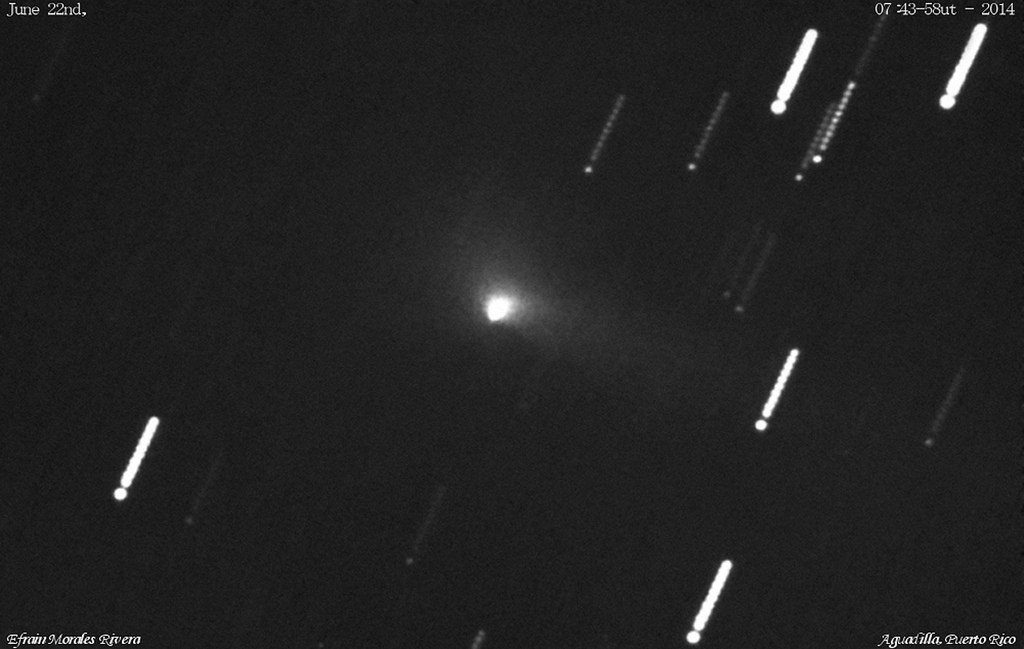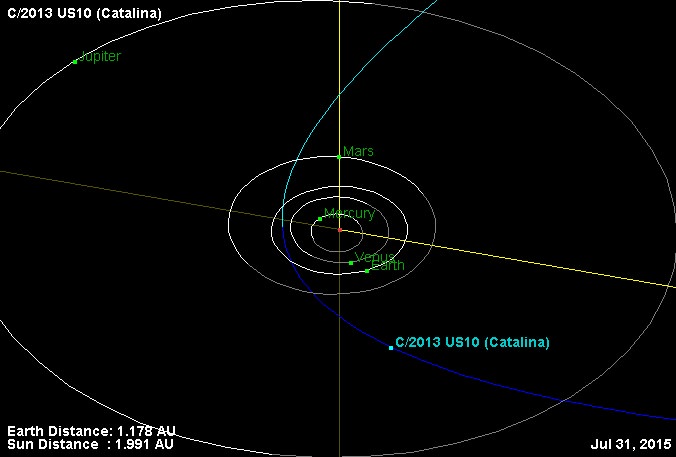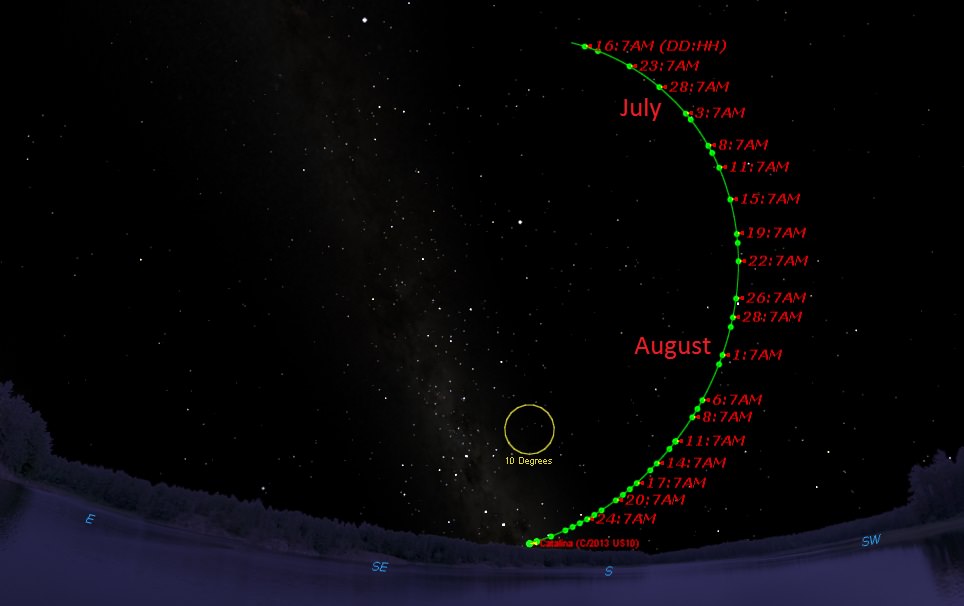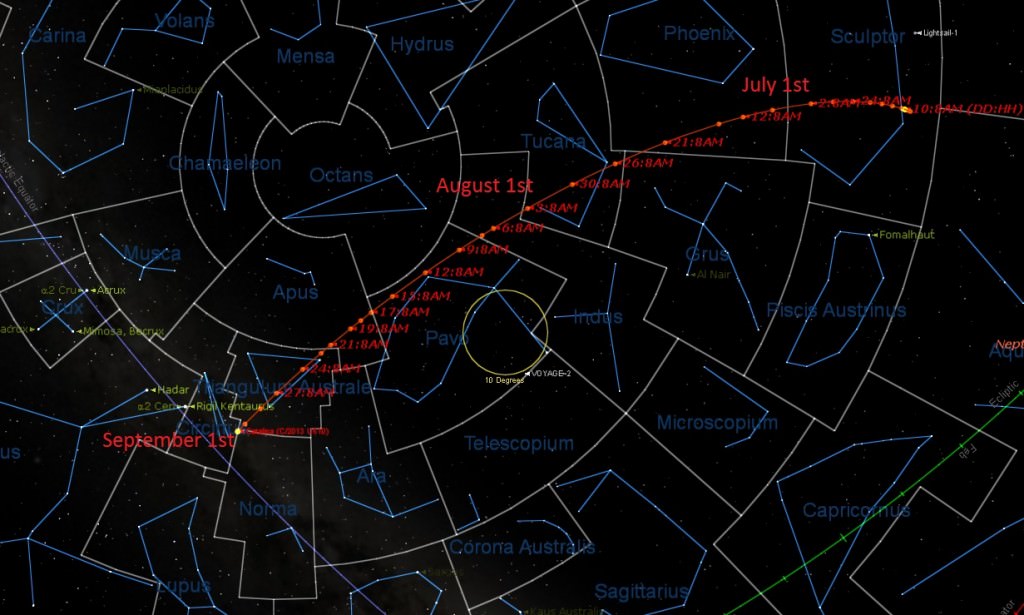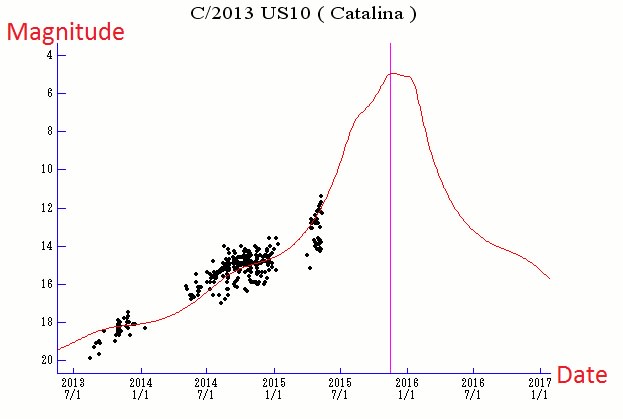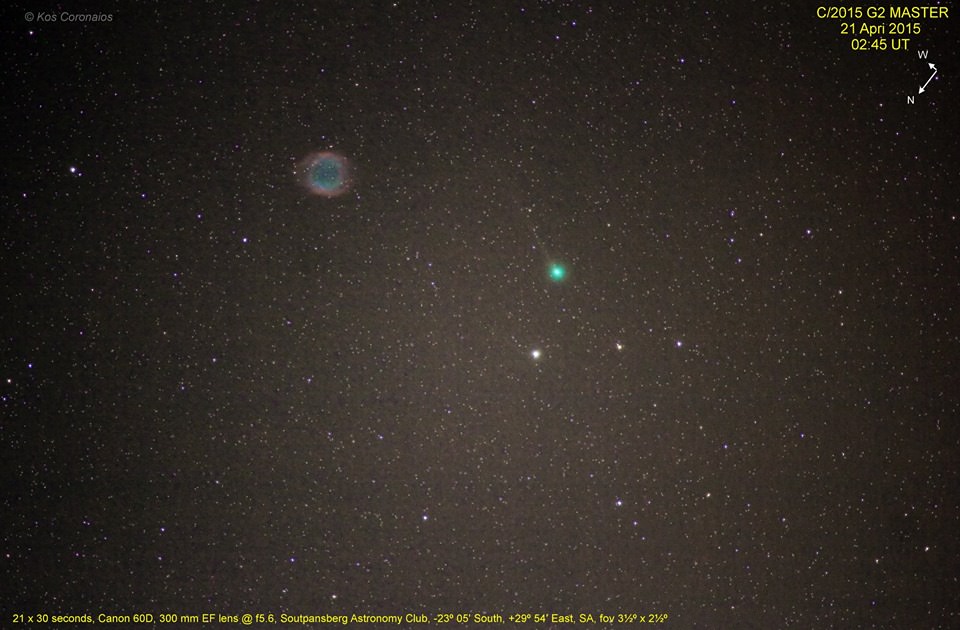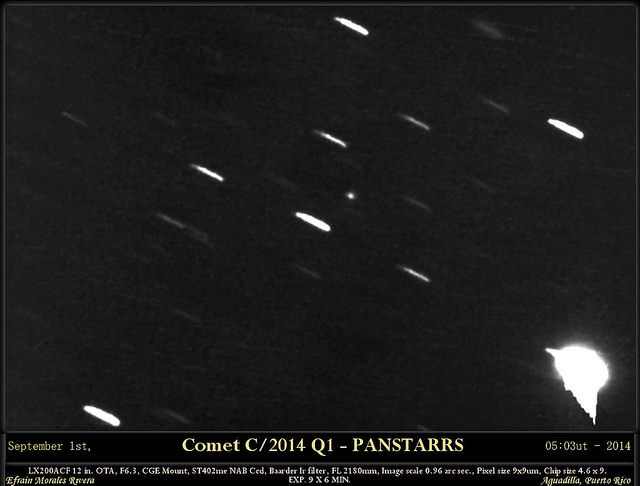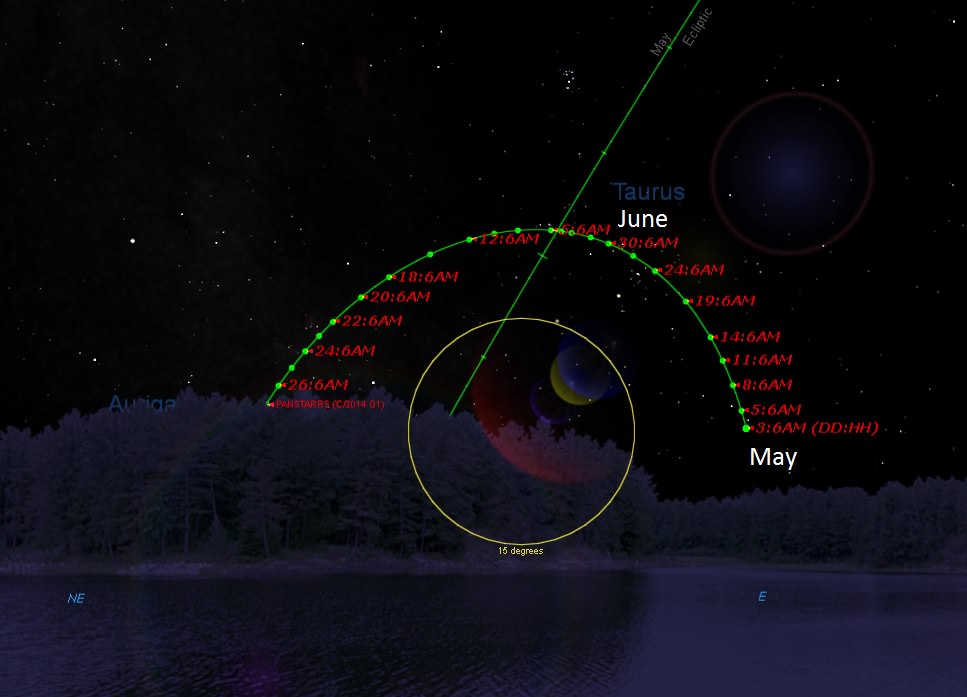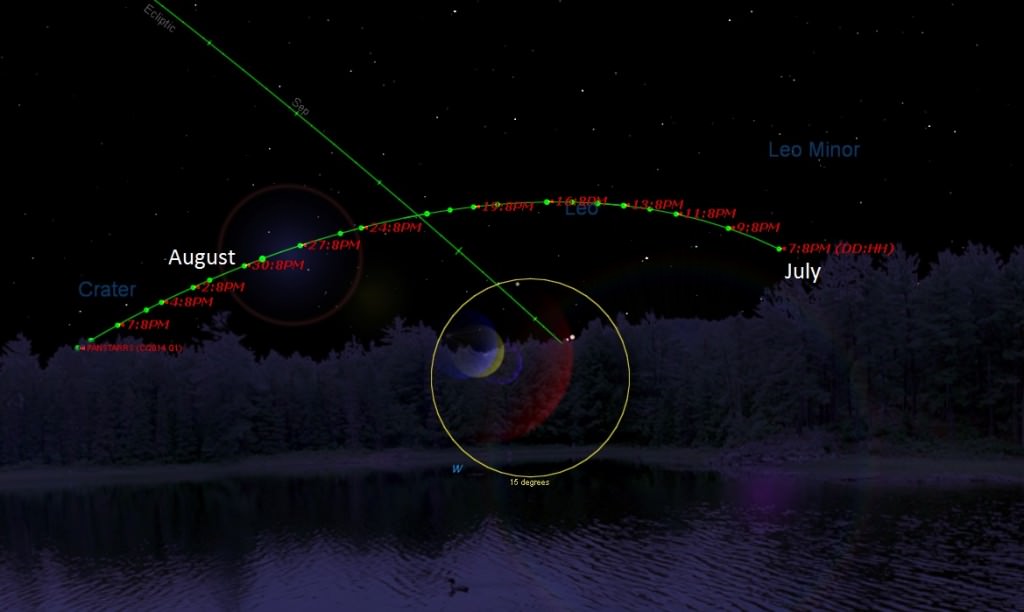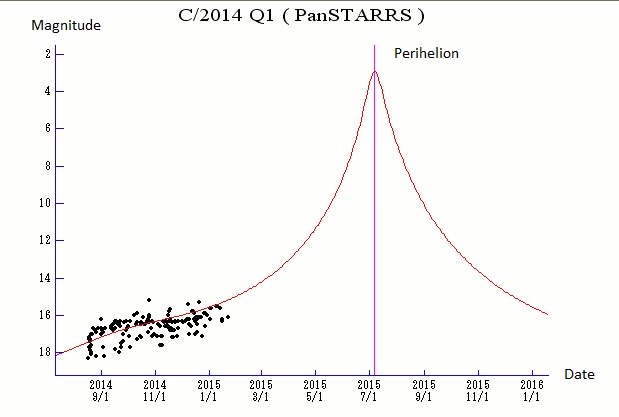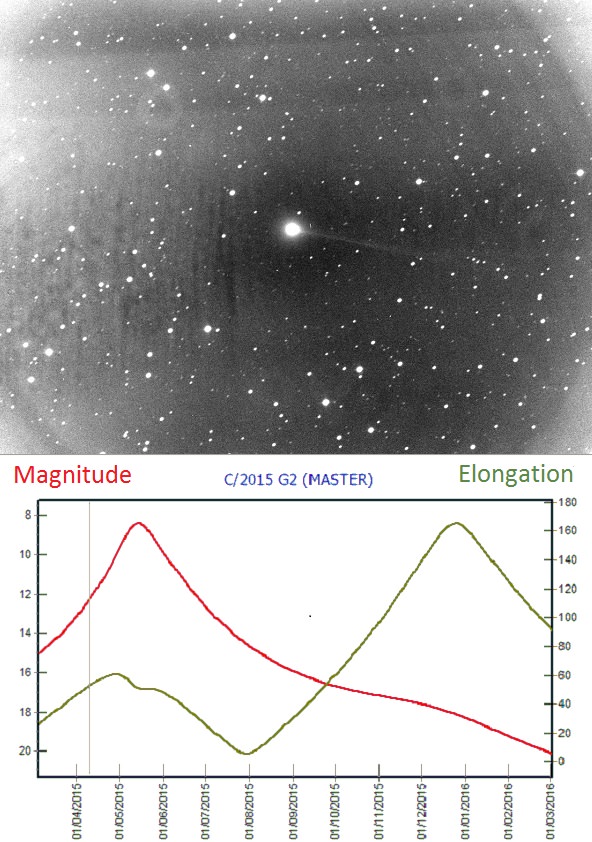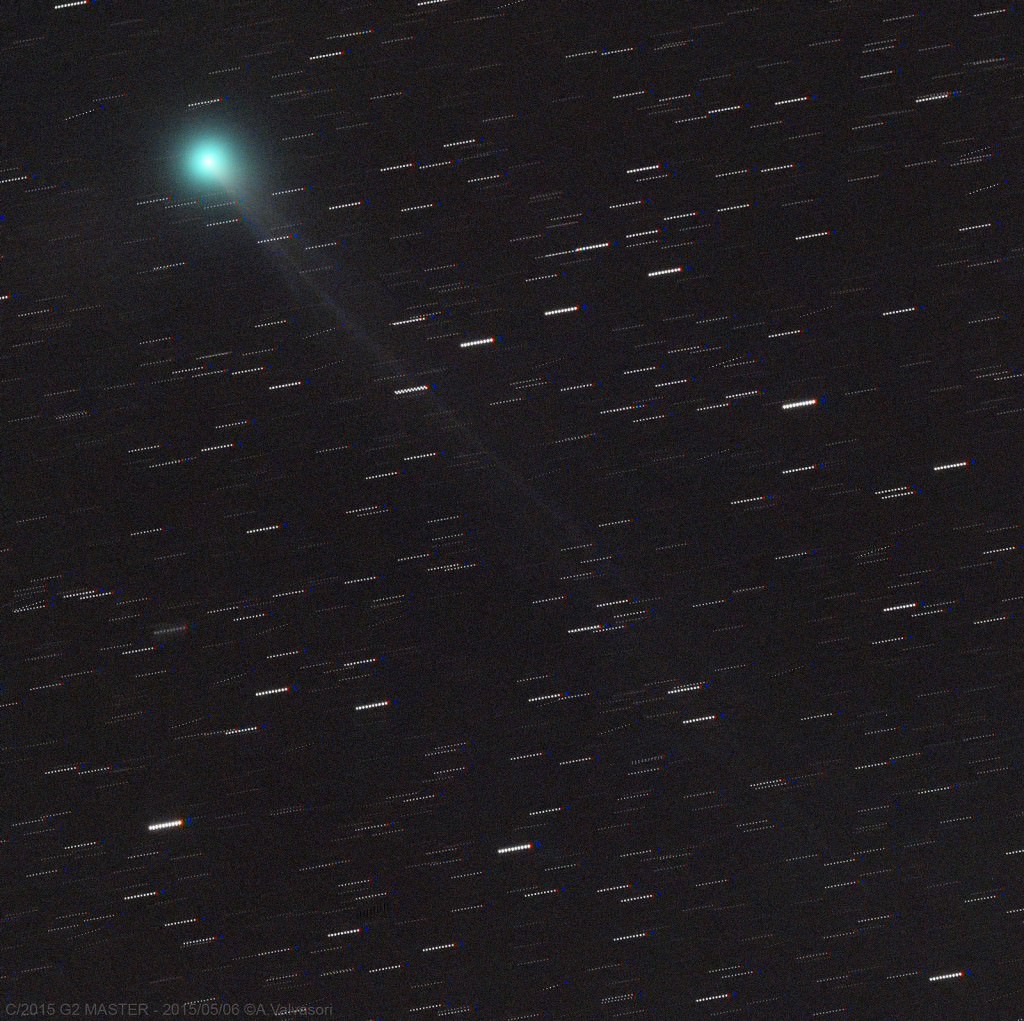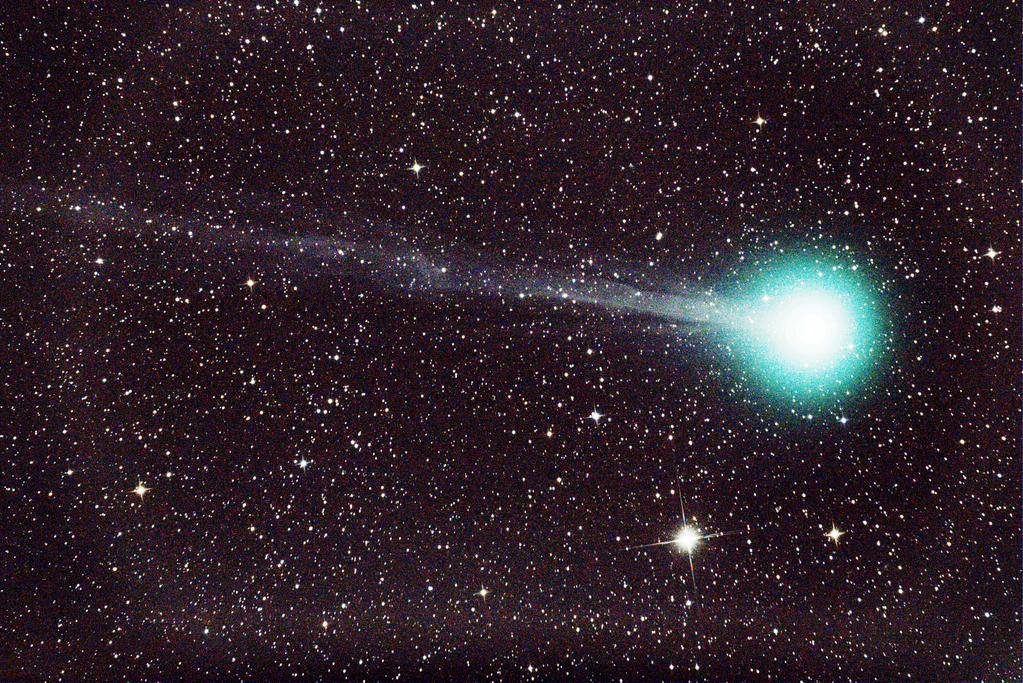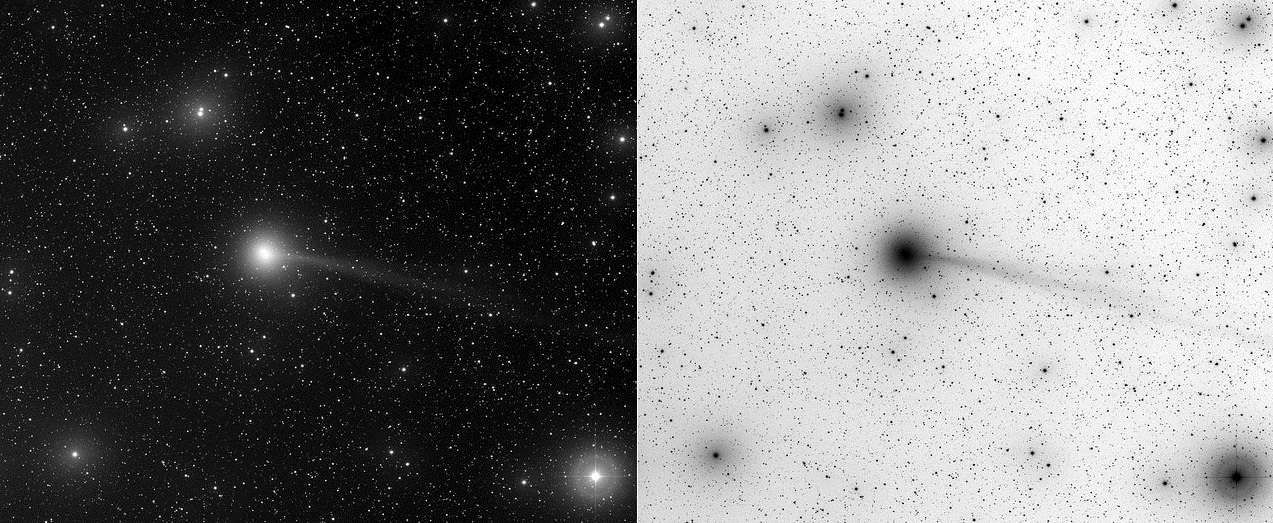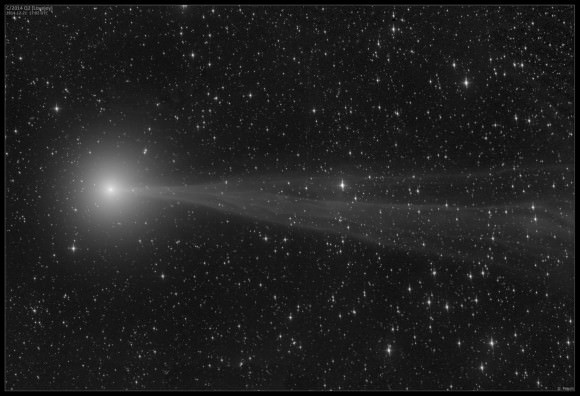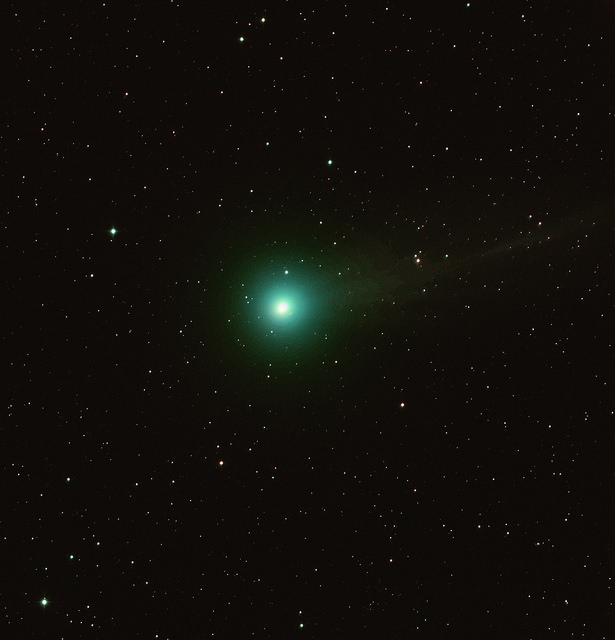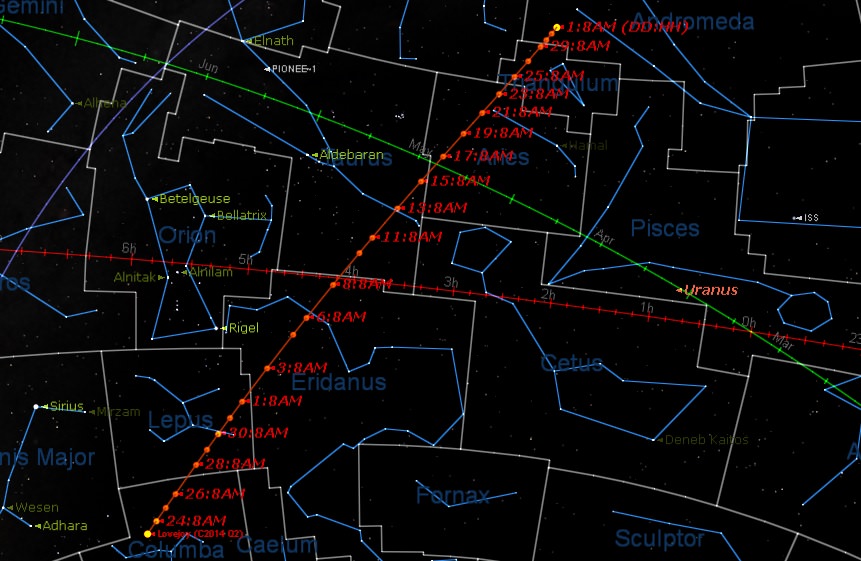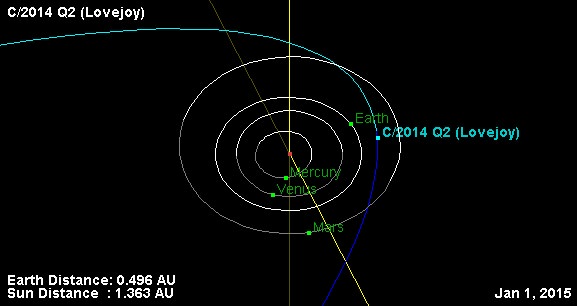Itching for some cometary action? After a fine winter’s performance from Comet C/2014 Q2 Lovejoy, 2015 has seen a dearth of good northern hemisphere comets. That’s about to change, however, as Comet C/2013 US10 Catalina joins the planetary lineup currently gracing the dawn sky in early November. Currently located in the constellation Centaurus and shining at magnitude +6, Comet US10 Catalina has already put on a fine show for southern hemisphere observers over the last few months during Act I.
Currently buried in the dusk sky, Comet US10 Catalina is bashful right now, as it shares nearly the same right ascension with the Sun over the next few weeks, passing just eight degrees from our nearest star as seen from our Earthly vantage point on November 7th — and perhaps passing juuusst inside of the field of view for SOHO’s LASCO C3 camera — and into the dawn sky.
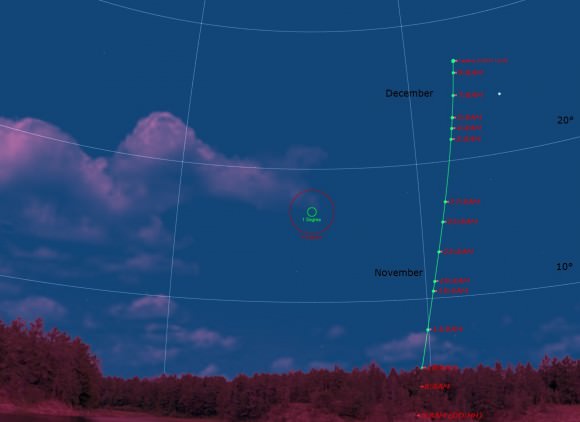
The hunt is on come early November, as Comet US 10 Catalina vaults into the dawn sky. From 30 degrees north latitude here in Central Florida, the comet breaks 10 degrees elevation an hour prior to local sunrise right around November 20th. This should see the comet peaking in brightness right around magnitude +5 near perihelion the same week on November 16th.
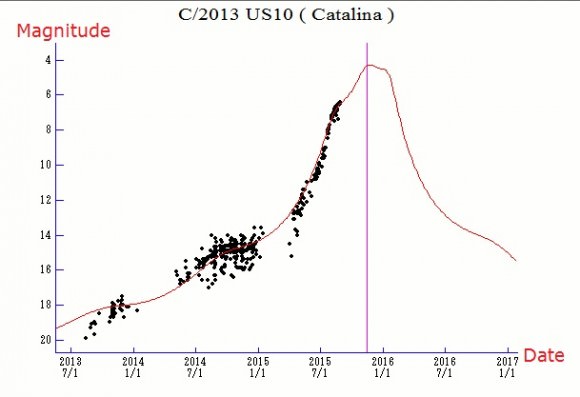
The angle of the comet’s orbit is favorable for northern hemisphere viewers in mid-November, as viewers start getting good looks in the early morning from latitude 30 degrees northward and the comet gains about a degree of elevation per day. This will bring it up out of the murk of twilight and into binocular view.
Mark your calendar for the morning of December 7th, as the crescent Moon, Venus and a (hopefully!) +5 magnitude comet US10 Catalina will all fit within a five degree circle.
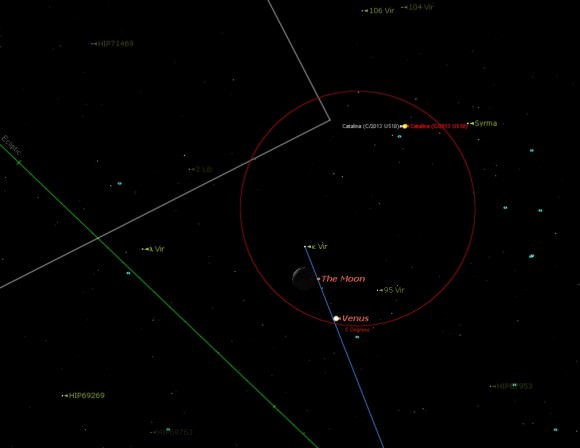
Here are some key dates with celestial destiny for Comet US10 Catalina for the remainder of 2015:
October
20-Crosses into the constellation Hydra.
November
2-Crosses into the constellation Libra.
16-Crosses into the constellation Virgo.
16-Reaches perihelion at 0.823 AU (127.6 million kilometers) from Sun.
26-Crosses the ecliptic plane northward.
27-Passes less than one degree from the +4.5 magnitude star Lambda Virginis.
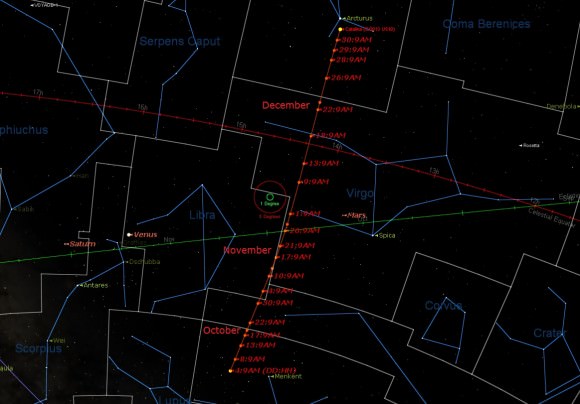
December
7-Fits inside a five degree circle with Venus and the waning crescent Moon.
8-Passes less than one degree from the +4 magnitude star Syrma (Iota Virginis).
17-Crosses the celestial equator northward.
24-Crosses into the constellation Boötes.
In January, Comet US10 Catalina starts the New Year passing less than a degree from the -0.05 magnitude star Arcturus. From there, the comet may drop below +6 magnitude and naked eye visibility by mid-month, just prior to its closest approach to the Earth at 0.725 AU (112.3 million kilometers) on January 17th. By February 1st, the comet may drop below +10th magnitude and binocular visibility, into the sole visual domain of large light bucket telescopes under dark skies.
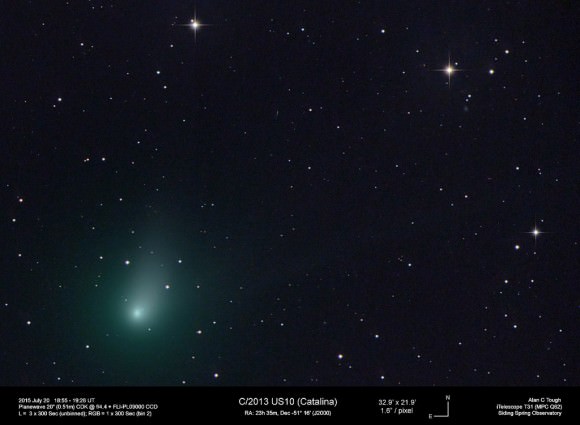
Or not. Comets and predictions of comet brightness are always notoriously fickle, and rely mainly on just how the comet performs near perihelion. Then there’s twilight extinction to contend with, and the fact that the precious magnitude of the comet is diffused over its extended surface area, often causing the comet to appear fainter visually than the quoted magnitude.
But do not despair. Comets frequently under-perform pre-perihelion passage, only to put on brilliant shows after. Astronomers discovered Comet US10 Catalina on Halloween 2013 from the Catalina Sky Survey based just outside of Tucson, Arizona. On a several million year orbit, all indications are that Comet US10 Catalina is a dynamically new Oort Cloud visitor and will probably get ejected from the solar system after this all-too brief fling with the Sun. Its max velocity at perihelion will be 46.4 kilometers per second, three times faster than the New Horizons spacecraft currently on an escape trajectory out of the solar system.
The odd ‘US10’ designation comes from the comet’s initial identification as an asteroidal object, later upgraded to cometary status. The comet’s high orbital inclination of 149 degrees assured two separate showings, as the comet approached the Sun as seen from the Earth’s southern hemisphere, only to then vault up over the northern hemisphere post-perihelion. As is often the case, the comet was closest to the Sun at exactly the wrong time: had perihelion occurred around May, the comet would’ve passed the Earth just 0.17 AU (15.8 million miles or 26.3 million kilometers) distant! That might’ve placed the comet in the negative magnitudes and perhaps earned it the title of ‘the Great Comet of 2015…’
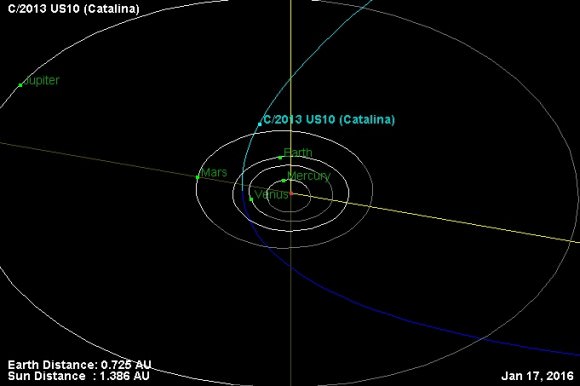
But such was not to be.
Ah, but the next ‘big one’ could come at any time. In 2016, we’re tracking comet C/2013 X1 PanSTARRS, which will ‘perhaps’ become a fine binocular comet next summer…
More to come. Perhaps we’ll draft up an Act III for US10 Catalina in early January if it’s a top performer.


